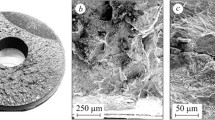Abstract
A new equation for isothermal relaxation of stress-relieved steel previously derived, has been modified to study stress losses in prestressed elements due to steam curing of concrete. A calculation method is proposed, which takes into account the effect of loosening during heating and of releasing of the prestressing force.
The theory predicts a complete stress stabilization after steam curing up to times depending on temperature and duration of the steam curing. Furthermore, for longer periods the theory predicts an increase of the relaxation values. Tests performed show an excellent agreement between theory and experimental results.
Résumé
Une nouvelle expression pour la relaxation isotherme, qui a été précédemment déduite, a été judicieusement modifiée pour étudier l’influence d’un cycle d’étuvage sur la perte de contrainte des éléments en béton précontraint par fil adhérent. Une nouvelle méthode pour le calcul des pertes de contrainte est ainsi proposée. La méthode tient compte aussi de l’influence sur la relaxation du relâchement de l’acier pendant le chauffage «loosening» et du raccourcissement élastique du béton quand on libère la force de précontrainte.
La théorie a donné lieu à deux séries d’essais afin de prédire la relaxation. Les deux paramètres empiriques de la théorie ont été déterminés au moyen d’un essai de relaxation isotherme pour la première série et d’un essai de traction pour la seconde.
Les valeurs de la relaxation pendant et après étuvage, que prédit la théorie, concordent avec les résultats. D’après la théorie également, une stabilisation complète doit intervenir après l’étuvage dans des délais qui dépendent de sa température et de sa durée, en accord avec le résultat des essais. En outre, pour de plus longues périodes la théorie prévoit une augmentation des valeurs de relaxation. Malheureusement, ces valeurs ne peuvent être vérifiées en l’absence de résultats expérimentaux.
Similar content being viewed by others
References
Erdélyi A., Czeglédi G., Szombatfalvy A.—Effect of steam curing temperature on the extrapolability of tendon relaxation. FIP Congress, New York, 1974.
Schwier F., Hofman H. P.—Relaxations Verhalten von Spannstählen in Spannbetonkonstruktionen nach einer kurzzeitigen Wärmebehandlung, FIP Congress, New York, 1974.
Van Herberghen P., Lambotte H., Van Acker A., Van Nieuwenburg D.—Étude des pertes de précontrainte par relaxation de l’acier sous l’influence d’un cycle d’étuvage, FIP Congress, New York, 1974.
Nader N.—Influence de l’étuvage sur la relaxation des armatures en précontrainte par prétension, Publications Techn. du Cerib, no 21, 1975.
Sánchez-Gálvez V., Elices M., Astiz M. A.—A new formula for relaxation of stress-relieved steels. Materials and Structures, No. 54, November–December 1976.
Sánchez-Gálvez V., Elices M.—Relajacíon de tensiones a temperatura variable. Anales de Física, Vol. 73, No. 3, 1977.
Erdélyi A., Takács S.—Testing method for the relaxation measurements with prestressing wires under anisothermal conditions up to 100°C. Periodica Polytechnica, Vol. Civil Engineering/PPCE/1978, No. 1. Proceedings of the Technical University Budapest, Hungary, to be published in early, 1978.
Erdélyi A., Reporter.—Relaxation losses in tendons due to steam curing of concrete, FIP Commission on Prestressing Steels and Systems Draft Report, Commission Meeting Rotterdam, octobre 1976.
Author information
Authors and Affiliations
Rights and permissions
About this article
Cite this article
Sanchez-Galvez, V., Elices, M., Erdelyi, A. et al. Stress relaxation due to steam curing. Matériaux et Constructions 10, 351–356 (1977). https://doi.org/10.1007/BF02473732
Issue Date:
DOI: https://doi.org/10.1007/BF02473732




